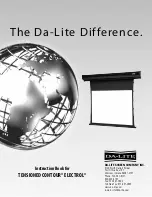
July 2021
33
Communications Protocol
Is a system of rules that allows two or more entities of a communications system to transmit information
of varying sizes via any type of physical medium. The protocol defines the syntax and semantics used in
the communication between entities. The protocol may provide rules for synchronization of
communication and possible error recovery processes.
Master/Server/Host
The entity that controls the conversation and/or the entity that provides information upon request from a
client/peripheral. A master usually polls a slave/client/peripheral to query if the device has data to present
to the master. Servers/Hosts may act as masters or as entities that respond to requests from
clients/peripherals. In both cases it is the responsibility of the server/host to support flow control so
‘swamping’ of the client does not occur.
Slave/Client/Peripheral
The entity that responds to master queries and/or requests data from the server/host. A client/peripheral
can initiate a conversation with a server/host, but once initiated, the server/host controls the conversation.
Physical Medium
Is present as the electrical circuit or airwave frequency(ies) used to connect the entities of the
communications system. The physical medium itself may packetize data for transmission purposes, but
that does not affect this protocol and therefore it will not be addressed in this document. An example
would be BLE which breaks ‘user data’ into twenty byte packets.
Primary physical media include:
•
Universal Serial Bus(USB) – 2 wire differential signaling supporting half duplex communications
•
RS232 – minimum 2 wire non differential Tx/Rx medium supporting full duplex communications
•
RS485 – minimum 2 wire differential medium supporting half duplex communications, or 4 wire
supporting full duplex communications
Network Topology
Defines the arrangement of the elements in a communications network.
For example:
•
Bus
– all elements connect to a central line called the “Bus”. In a Bus topology, broadcasting is an
inherent feature.
•
Star
– a central hub is utilized to make many point-to-point connections between elements.
•
Daisy chain
– each element in the chain passes data not intended for it to the next element in the
chain until the data reaches the intended recipient.
There are topologies but these are the only ones of interest in this specification.
Link Type
Point-to-Point (P2P)
One device communicates with only one other device over the link.


































